Reading a Keysight-note, not sure what is the following selected line means? I read and understood the meaning of electrical length, how it is related to bit in flight and wavelength is not clear.
-
4You may have in your hands a piece of marketing material. It's no more a technical writing. It can have been a technical writing originally, but a professional advertisement text poet has modified it to something else. The poet surely knows numerous technical terms but cannot write cold facts in an exact way like an engineer would write to another engineers. The paper probably is targeted to persons who want to read something about the subject before giving the money to engineers to buy the product they want. The idea is to create illusion "I understand this and it's an useful product". – Mar 07 '21 at 21:05
5 Answers
While the document talks about more wavelengths, usually the threshold where large impedance mismatches start to matter is regarded as 1/10th of a wavelength for digital systems. Below that the practical effects of impedance mismatches are small, and at 1/4th wavelength they are already quite large. For analog and RF electronics the threshold can be even lower.
Let's first take a look at what happens in a long cable with a severe impedance mismatch at the far end:
The transmitted wave reflects at the impedance mismatch, and the reflected wave adds up with the transmitted wave. Depending on exact length of the cable, the location and the size of the mismatch, the waves add up to either a slightly distorted signal or to a full standing wave behavior I've drawn here.
With careful design and control of the cable length, the reflection can be taken advantage of, such as in quarter wave impedance transformer. However, normally we want systems to work the same way independent of the exact length of the cable. To achieve this, proper termination must be used to avoid distortion due to reflections.
But, what happens in a short cable?
Because of the short length, the phase of the reflected wave is almost the same as the transmitted wave. Thus overall distortion remains low, and there is little effect from the impedance mismatch.
The document also mentions intersymbol interference. This applies to the data transmitted, and relates to how many following bits can the reflection from a single bit disturb. However, I would assume that in most protocols it makes little difference whether the noise is from the previous bit, or a bit that was 5 bits ago.
- 6,804
- 17
- 32
-
1Just a remark on your last statement: Whether interference arises from the previous bit or from a bit N unit intervals (UI) before makes quite a difference in designing equalization circuitry, which will become more complex, occupy more area and consume more power in the latter case. – DavideM Mar 08 '21 at 07:56
-
@DavideM Ah, that is indeed true for highly sophisticated systems that have equalization. – jpa Mar 08 '21 at 13:26
-
2+1 Because I never knew why 1/4 wave was significant but that last picture make it a bit more obvious why: reflected symmetry of the half-wave. – DKNguyen Mar 08 '21 at 17:55
You can stuff more identical sticks end-to-end into a pipe if the pipe is longer. Then if you whack one end of the pipe it disturbs more sticks since there are more of them in the pipe.
- 54,733
- 4
- 67
- 153
This might be referring to mm or cm bit rate wavelengths where path lengths can exceed 1 wavelength. (Many) The reflections will affect more bits than 1. e.g. Optical or Gbps rates. So impedance matching is critical.
This is referring to the symbol wavelength rather than the carrier.
- 1
- 3
- 54
- 182
As the length of the line increases, more waves are moving along it.
Think of a stretch of road that has, on average, 10 vehicles/km. A 10 km sectikon would have 100 vehicles in transit.
Also, consider delay. If the average speed is 60 km/hr, it takes 1 minute for a vehicle to enter the 1 km stretch and travel the length, so each transit is delayed 1 minute, and there are 10 items in transit. On a 10 km stretch, each is delayed 10 minutes, and there are 100 items in transit at any time.
3*108m/second: not just a good idea, it's the LAW!*
- 44,867
- 1
- 41
- 104
- 3,634
- 5
- 13
Remember that the wavelength is a length, measured in meters.
For a wave with a period of \$ T \$ and a velocity \$ v \$, the signal travels \$ \lambda = v.t \$ in one period.
Thus if you increase the length of the medium (the 'electrical length'), you'll get more repetitions of the electrical signal, i.e. 'more wavelength'.
- 289
- 1
- 5


